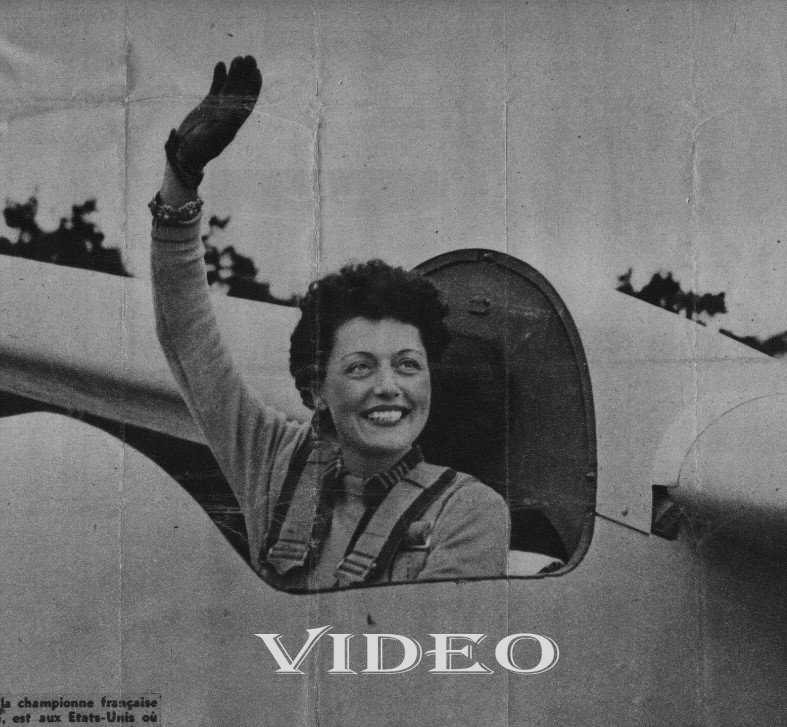SUZANNE MELK
1908-1951
Championne du monde
vol à voile

Les jeunes années
C'est dans le petit village de BLUDESH, au coeur du Tyrol autrichien, que nait Jean MELK en l'an 1876. Orphelin de père à l'age de 7 ans, il se rend alors chez un oncle émigré à VESOUL. Intelligent et travailleur, il réussit dans ses études et développe la petite entreprise de son oncle. Il deviendra un entrepreneur réputé dans la région, et on fera appel à lui pour construire l'Eglise du Sacré Coeur de Vesoul, ainsi que celle de BESANCON. Marié, il aura 4 enfants: 3 filles et 1 garçon. Suzanne naitra le 17 mars 1908, et passera toute son enfance dans la propriété familiale de NAVENNE, véritable petit domaine agrémenté de sources, cascades, et bassins. Pendant la guerre, le vaste potager produira: tabac, betteraves à sucre, vin, etc...Mariée à un quincailler, Suzanne se morfond dans un univers qui ne lui appartient pas. D'une beauté fascinante, dotée d'une forte personnalité, pianiste virtuose, elle déconcerte son entourage. Après le décès de son jeune mari, elle épouse Jean Dreyfus.
En 1935, Ils achètent pour 500 francs 2 "Hanriot 32", et en font retaper un avec lequel elle effectuera ses premiers vols. Elle fait alors partie du comité à l'origine de la création de l'aéroclub et de l'école de pilotage de Vesoul. Deux ans plus tard, elle obtient le brevet de monitrice.
Attirée par la beauté des planeurs et les émotions fortes qu'elle ressent dans la recherche des courants porteurs, elle abandonne - pour un temps - l'avion à moteur. Elle devient en 1938 la quatrième française titulaire du brevet de pilote de vol à voile.
A l'arrivée des Allemands en juin 1940, son mari - de confession juive - divorce pour la protéger, avant de se réfugier en Angleterre, puis en Amérique du Sud. La famille perd alors complètement la trace de Suzanne jusqu'au 8 mai 1945.
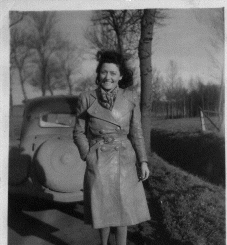
La guerre
Engagée comme ambulancière, elle subit sans défaillance les terribles vagues de Stukas sur les routes de la débacle de 1940. N'acceptant pas la défaite, elle entre comme agent de renseignements dans le réseau de résistance BEARN, où elle effectue de dangereuses missions à travers les lignes ennemies. Elle ne croisera pas son frère Pierre, lui aussi dans la résistance, et qui sera grièvement blessé par une balle allemande reçue en pleine poitrine, le jour de la libération de Vesoul par les Américains. Pour ses prises de risques exceptionnels, sa conduite héroique, elle est l'objet de plusieurs citations de l'armée. Elle est en outre décorée de la Croix de Guerre, de la Médaille de la Résistance, et nommée Chevalier de le Légion d'honneur.La guerre ne lui fait pas oublier sa vocation première, et en 1945, elle rejoint les cadres navigants de l'armée de l'air à CHATEAUROUX, et devient pilote militaire. Sous les directives du commandant Perrier, chef de la célèbre patrouille d'Etampes,elle arrive vite à faire des présentations sur "Nord 1000". En pilotant le fameux "Dewoitine 520" - seule femme avec Elizabeth BOSELLI à l'avoir fait - elle soulève l'admiration de ses professeurs. Mais c'est la passion du vol à voile qui l'amène à quitter Chateauroux pour le centre national de vol à voile de La Montagne Noire.
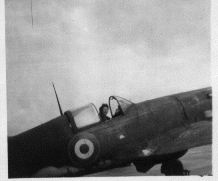
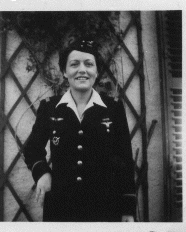
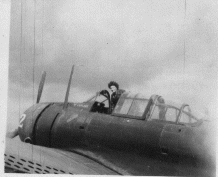
Les records
Sous la houlette du chef-pilote Gourbeyre, grand spécialiste de la formation des moniteurs, elle confirme rapidement ses compétences. Après avoir réussi toutes les épreuves du brevet "D", elle veut tenter de battre des records. Le 9 septembre 1945 elle bat le record de France de durée sur monoplace, détenu jusqu'alors par la championne Marcelle CHOISNET. Le record atteint est de 13 heures 18 minutes. Les 5 et 6 octobre, elle bat son propre record en portant sa durée à 16 heures 44 minutes.L'année suivante, au centre de vol à voile de Saint Auban sur Durance, elle atteint l'altitude de 4200 mètres, battant ainsi le record mondial d'altitude. Mais faute de barographes performants (limités à 3500 m), le record n'a pu être homologué.
De retour à La Montagne Noire, sur un biplace "Castel 242", Suzanne devient Championne du Monde de durée en circuit fermé, en 16 heures 3 minutes. C'était les 25 et 26 mars 1947.
Après cette consécration, elle est invitée à PRAGUE à participer à une recontre internationale de voltige, où elle est la seule femme inscrite, et se classe seconde à quelques points du champion tchèque. La célébrité de Suzanne dépasse désormais le monde de l'aviation et fait la une des journaux de l'époque, comme l'hebdomadaire "Images du Monde"...
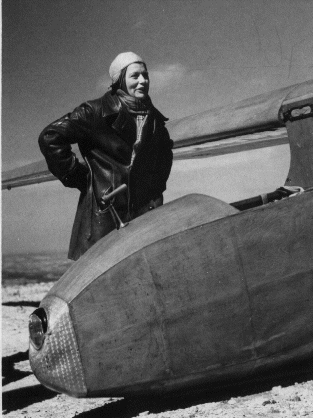
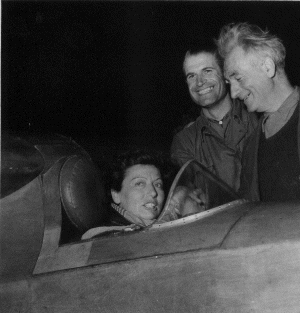
La Montagne Noire
Les Etats-Unis
En septembre 1947, à bord d'un Lockheed-Constellation, via Londres et Les Açores, Suzanne s'envole vers les Etats-Unis. Son principal objectif est de battre le record de distance détenu par une femme russe. C'est pourquoi elle quitte son pays, et sa famille à laquelle elle est très attachée, afin de trouver les courants puissants qui balayent les immenses plaines américaines. Elle est fascinée par sa nouvelle terre d'accueil,apprend rapidement l'anglais, et s'empresse d'obtenir un visa permanent. A NEW-YORK,elle découvre les immenses chantiers de construction où s'élèvent des gratte-ciel de plus en plus hauts, et évoque souvent son frère Pierre entrepreneur, les entreprises familiales, qui après Eglise, Hôtel de Ville,Hôpital...participent activement à l'effort de reconstruction du Vesoul d'après guerre. De Long Island, elle se rend en Floride en empruntant les autoroutes qui lui permettront, avec voiture et planeur en remorque, d'atteindre son but en 2 jours. Là, elle participe à de nouvelles compétitions, dont le "Florida Challenge Trophy of Sanford". Avec son nouvel appareil "AIR-100", elle totalise 128 points, contre 25 attribués à la championne américaine Virginia BENNIS. Avec ce score, elle passe devant tous les pilotes masculins, à l'exception de BRITTAIN qui remporte le trophée.Sa prestation lui vaut d'être portée en triomphe, et pendant que monte le drapeau tricolore dans le ciel de Floride, Suzanne suscite les cris de "Vive la France" sur fond de Marseillaise. Le lendemain, la presse américaine fait paraître les articles les plus élogieux à la gloire du vol à voile français qu'elle représentait avec tant de prestige.
Malheureusement,En 1949, Suzanne rencontre des problèmes de santé, et doit se reposer. Elle séjourne à WASHINGTON, et profite de cette période de ralentissement d'activité pour s'adonner, avec ses amis, au plaisir de la voile dans la baie Chesapeake
L'année suivante son mal s'aggrave, et elle doit se rendre à DURHAM en Caroline du Nord, pour se faire soigner par un grand spécialiste des maladies du sang: Walter KEMPNER, Docteur à l'Université DUKE.Un ami, Lou HOWARD, donne son sang à plusieurs reprises, et offre un rein...Hospitalisée,elle écrit à ses proches pour exprimer tout son regret d'être séparée à jamais des siens et de son pays. Mais elle n'est pas triste. Forte comme elle l'a toujours été, elle mène le combat contre la maladie donnant l'exemple de son courage jusque dans ses derniers instants.
Entourée d'amis partculièrement dévoués comme:le Professeur J.J.DEMOREST et son épouse, qui l'assisteront pendant plusieurs mois, de jour comme de nuit,Lou HOWARD, le Docteur W.KEMPNER qui prendra à sa charge les frais d'hosptalisation, elle décédera le 4 février 1951, après avoir exprimé le désir de reposer en France. Son corps embaumé quittera les Etats-Unis le 23 février à bord du navire "Le Liberté", pour rejoindre son petit village de Navenne.
Son souvenir reste à jamais gravé dans le coeur de tous ceux qui l'ont connue, séduits par ses qualités humaines d'exception.
Faites parvenir vos remarques ou demandes de renseignements complémentaires:
Ecrivez ![]() Write
Write
WELCOME TO THE WEBSITE
of
SUZANNE MELK
World Champion Glider Pilot
Early Years
Jean Melk was born in 1876 in Bludesh a tiny village in the Austrian Alps. After his father's death, when he was only seven, he was sent to live with an uncle who had emigrated to Vesoul, France. Being an intelligent and hard-working young man, he excelled in his studies and soon was helping his uncle in his thriving construction firm. His reputation as a sound engineer and entrepreneur attracted the attention of the city fathers who asked him to constuct the Sacred Heart Church of Vesoul, as well as a similar church in Besancon. He married and had four children: one boy, and three girls, one of whom was Suzanne, born March 17,1908. She spent her entire childhood on the family estate of Navenne, a veritable playground of springs, waterfalls, and ponds. During the War, this fertile land produced tobacco, sugar beets, and wine, among other things. Suzanne grew up to be a fascinating beauty, blessed with a strong energetic personality, and many talents, including virtuosity at the piano. But she married a hardware dealer and became lost in a life which never suited her. Later, after the untimely death of her young husband, she married Jean Dreyfus. In 1935, they bought two "Hanriot 32" for one hundred dollars. They restored one of them; thus launching Suzanne in her career as a pilot. During this period she was instrumental in starting the Vesoul Airclub and Flying School. Two years later she had already earned her motorplane instructor's license. However, she was attracted by the beauty and grace of glider planes, and loved the feeling of searching for just the right currents. Consequently, she temporarly abandoned motor planes and took up gliding. In a short time she became only the fourth Frenchwoman to have gotten a glider license.
When the Germans arrived in 1940, her husband, Jean Dreyfus, because he was Jewish, and, for her own protection divorced her, and fled to England before South America. Suzanne also dropped out of sight and her family never saw her again until May 8 1945 !
The War
Working as an ambulance driver during the war, Suzanne endured, but without incident during the debacle of 1940, the terrible assaults on the roads by the Stukas (German attack planes). Not one to be discouraged, she then continued her service to France by becoming an intelligence agent in the Resistance network Bearn where she carried out several dangerous missions across enemy lines. She never crossed paths with her brother, Pierre, who was also working in the Resistance. He was, ironically, severely injured in the chest by a German sniper bullet the exact day of the American liberation of Vesoul. For her heroic conduct and exceptional risk taking, Suzanne received many military citations. Furthermore, she was decorated with la Croix de Guerre, la Médaille de la Résistance, and was named a Chevalier de la Légion d'Honneur.
Despite her intense life during the war, Suzanne never forgot her original vocation, flying, and in 1945, she rejoined the officer unit of the Air Force at Chateauroux and became a military pilot. Under the direction of Captain Perrier, head of the prestigious Etampes patrol, she very quickly demonstrated her skill on the "Nord 1000". She also attracted the attention and admiration of her instructors when she became the first woman to fly the famous "Dewoitine 520". In the end, however, her passion for gliding caused her to leave Chateauroux and to enroll at the National Center of Gliding at la Montagne Noire.
Records
Once again, Suzanne confirmed her prowess as a pilot under Chief Pilot Gourbeyre, famous for training teachers. After passing all the tests for the "D" license, she decided to try for new records in gliding. On September 9, 1945, flying her single seater, she broke the French record, previously held by Marcelle Choisnet, of 13 hours 18 minutes in the air. Then on October 5th and 6th of the same year, she broke her own record, establishing a time of 16 hours 44 minutes.
The next year at the center for gliding at Saint Auban sur Durance, she again broke another record, this time for altitude: 4200 m - or approximately 14,000 feet above sea level. Unfortunately, because the altimeter recorded only to 3500 m, Suzanne's record could not be officially recognized.
Upon her return to La Montagne Noire, Suzanne became World Champion on the professional circuit with the two-seater for a time of 16 hours 3 minutes. This was the 25th and 26th of March, 1947. After this exhibition of her dedication to gliding, she was invited to Prague to participate in the International Meeting of Stunt Flying. She was the only woman registered, yet took second place, only a few points behind the Czech champion.
Suzanne's accomplishments in the world of aviation had exceeded everything to that point; she was featured in several magazines and publications of that time, including "Images du Monde".
America
By September 1947, aboard a Lockheed-Constellation, Suzanne was on her way to the U.S. via London and the Azores. At the time, the distance record in gliding was held by a Russian woman, and Suzanne's goal was to break it. So important was this goal that she left her family, to whom she was very close, and her country behind, in order to fly the powerful air currents which sweep the American plains.
She was fascinated by the welcome she received in her new country, quickly learned English, and obtained a permanent visa. In New york she discovered the huge skyscrapers being built ever and ever higher inside the immense construction sites. This reminded her of the family construction business back in Vesoul, and of her brother, Pierre, the entrepreneur, who, having built the Church, the Hospital and the Town Hall there, participated actively, in its reconstruction after the war.
From Long Island, Suzanne drove non-stop for 48 hours towing her glider on freeways (where they existed in those days), all the way to Florida! There, she entered new competitions, one of which was the Florida Challenge Trophy of Sanford. Flying her new glider, the Air-100, she earned 128 points compared to only 25 awarded to the American champion, Virginia Bennis. With this high score, she surpassed all other pilots, including male pilots, except Brittain who took home the trophy. Her performance earned her a triumphant welcome from the fans as the French flag was raised in the Florida sky, and they further honored her by crying out "Vive la France" at the end of the "Marseillaise". The next day there were several complimentary articles in the American press touting the glory of French gliding so well represented by Suzanne Melk
Unfortunately, in 1949, Suzanne began to have health problems and was forced to take some time off. She went to Washington,D.C. where she took advantage of the hiatus to indulge with friends in the more relaxing sport of sailing on the Chesapeake Bay. By the next year her health was getting much worse, so she went to Durham,North Carolina to be cared for by the well-known hematologist, Doctor Walter Kempner (Duke University).She was surrounded by particularly devoted friends, Jean-Jacques Demorest and his wife, who were with her day and night during those last months. Another friend, Lou Howard, gave blood several times and even offered her a kidney. The good Docteur Kempner took responsibility for her hospital expenses! While hospitalized she wrote to her loved ones of her sorrow that she would never see them or her country again. But her spirit remained high and she remained mentally strong as she fought the good fight, showing her courage right to the end.
Before her death on February 4, 1951, Suzanne had expressed a desire to be put to rest in France. Her body left the United States February 23 aboard the "Liberté" to be reunited with her little village of Navenne. Her memory remains forever engraved in the hearts of all who knew her and were charmed by her exceptional qualities.
Translated by Carol KENT (Boulder,Co)
 translate
translate